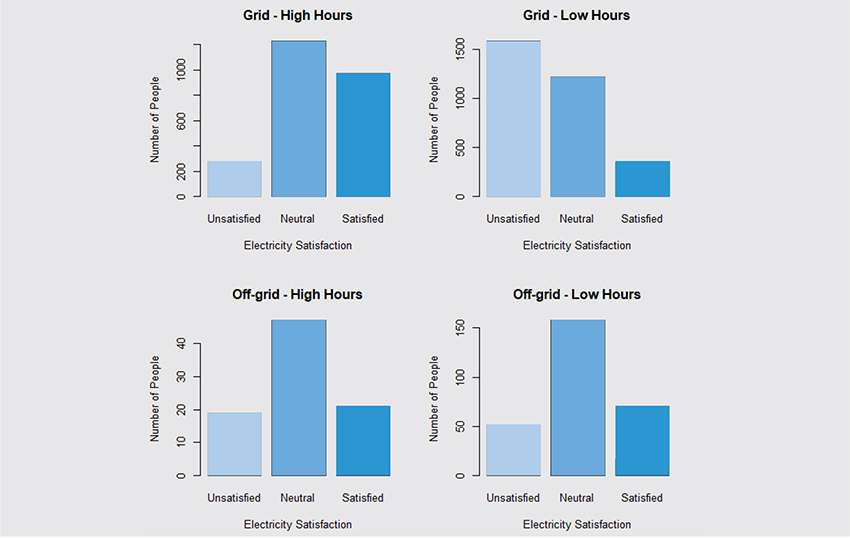Policy Brief
Using Solar Technologies to Increase Household Satisfaction with Power Supply
Sean Leong, Johannes Urpelainen, Abhishek Jain
April 2018 | Energy Transitions
Suggested Citation: Leong, Sean, Johannes Urpelainen, and Abhishek Jain. 2018. Using Solar Technologies to Increase Household Satisfaction with Power Supply. New Delhi: Council on Energy, Environment and Water.
Overview
Rural households’ subjective satisfaction with electricity access plays a decisive role in driving demand for off-grid technologies such as solar home systems. This policy brief examines the levels of satisfaction across technologies—grid electricity, solar home systems (SHS), and micro-grids (solar or diesel)—and investigates patterns of subjective satisfaction as they relate to average daily hours of electricity usage across users of different technologies.
The brief uses insights from Access to Clean Cooking Energy and Electricity: Survey of States (ACCESS) survey conducted in 2015, by the Council on Energy, Environment and Water (CEEW) in collaboration with Columbia University and Shakti Sustainable Energy Foundation, in six major energy access-deprived states in India.
Key Findings
- There is a robust positive association of electricity hours and satisfaction, though off-grid users are less dissatisfied compared to grid users at lower numbers of electricity hours.
- The relationship between electricity hours and satisfaction is stronger among users of grid electricity and weaker among those who rely on off-grid technology, especially solar home systems. This pattern is due to the fact that in off-grid solutions, electricity, even though for limited hours, is available in the hours when needed the most. This is not the case with grid electricity, despite longer duration of supply.
- Many rural households may have higher expectations from grid electricity than off-grid solutions. Moreover, users adopting off-grid solutions may have more realistic expectations that account for their lower dissatisfaction despite a lower number of electricity hours.
The graph shows subjective satisfaction levels by high and low hours for grid and off-grid electricity users, with the off-grid category consisting of both SHS and micro-grid users.

Our analysis highlights a substantial challenge for governments responsible for grid extension and electricity delivery, especially in terms of improving the duration of supply to improve households’ subjective satisfaction.
Technologies such as solar home systems are valued by rural households where grid electricity is unavailable and unreliable.







